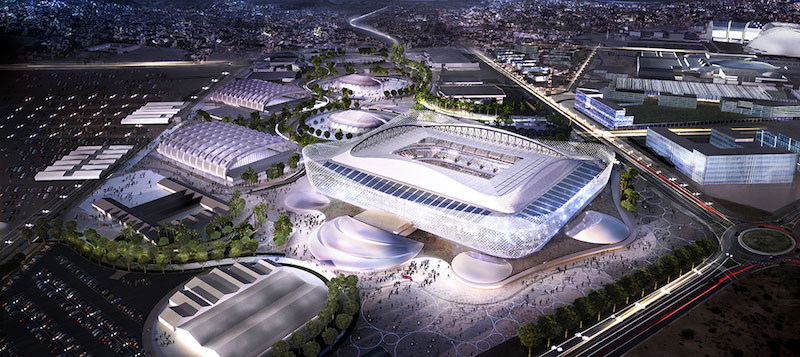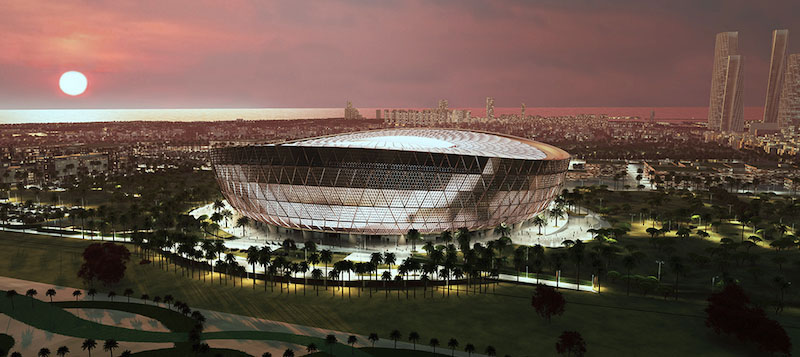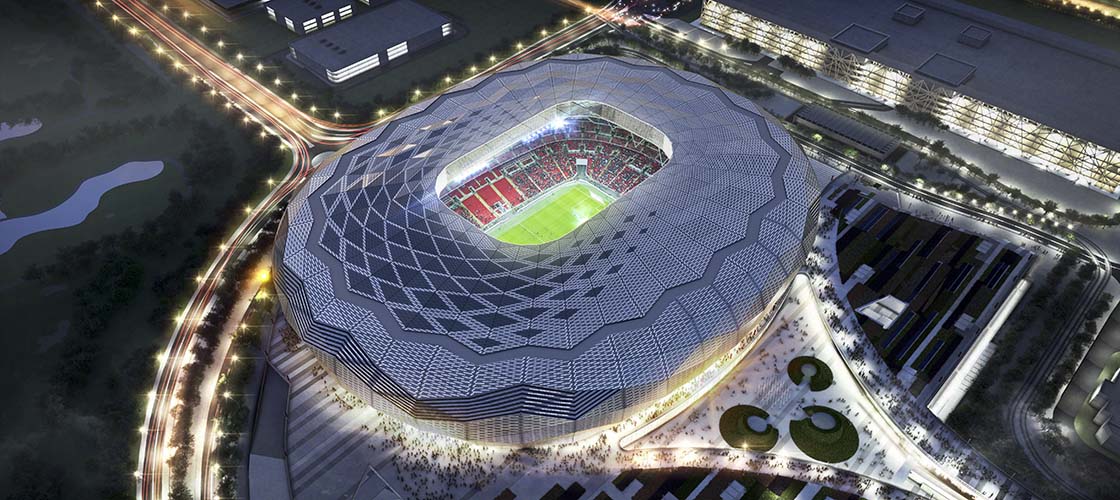The eight new stadiums for the FIFA World Cup Qatar 2022™ will act as focal points for the biggest sporting event to come to Qatar and the Middle East. These structures highlight how the state has embraced new technologies and a dedication to legacy to ensure the best tournament to date.
The new stadiums come in different shapes and sizes, and designed to reflect the rich heritage of the Qatari culture. The stadiums are all built guided by three basic principles: Access and Comfort, Sustainability, and Post-Tournament Legacy.
Access and Comfort: Advanced cooling technologies and smart design features will ensure that fans, players, officials and everyone else inside the stadiums are kept cool, regardless of the weather conditions outside. Shaded walkways, and new metro and rail links will make match day journeys smooth and comfortable. All venues will be accessible by physically-challenged visitors – they will have priority parking, wheelchair ramps, lifts, and accessible seating areas offering superior views.
Sustainability: Achieving sustainable development is a key objective in these projects and all stadiums are being built with a resolute focus on the future. All stadiums are working towards Global Sustainability Assessment System (GSAS) certification. To gain accreditation, only the most environment-friendly practices and materials are being used. Renewable and low energy solutions are being incorporated wherever possible.
Legacy: The FIFA World Cup Qatar 2022™ will give Qatar and the Middle East a set of world-class stadiums, magnets for future events of every kind. These stadiums will be suitable for Qatar’s domestic football league as well as other local sporting and cultural events. Many of the venues will feature modular designs to allow excess seating to be removed post-2022. These seats will be donated to football projects around the globe, helping to spread the love of the game. The stadiums’ reduced capacities will create arenas of the right size for local football and other sporting events.
The areas surrounding FIFA World Cup Qatar 2022™ stadiums are also expected to become focal points for the communities. The precincts will enjoy high-quality sporting facilities, parks, schools, transport links, shopping centres and places of worship. These amenities will be vital in helping the country achieve the development goals set in for Qatar National Vision 2030.
Khalifa International Stadium

The first stadium ready for the FIFA World Cup Qatar 2022™ was Khalifa International Stadium. The renovated 40,000-seat venue opened to huge celebrations in May 2017. It has already hosted memorable football matches and electrifying concerts. It will host the IAAF World Athletics Championships Doha 2019 before making its FIFA World Cup™ debut in 2022.
Al Janoub Stadium

In May 2019, Al Janoub Stadium became the second Qatar 2022 venue to open its gates – and the first to be built from scratch. Its opening night was one to remember. The spectacular inauguration included a thrilling Amir Cup final watched by 40,000 excited fans. The eye-catching stadium was designed by the late Zaha Hadid.
Al Bayt Stadium

Al Bayt Stadium is located in Al Khor City and is set to welcome the world’s best players and up to 60,000 fans during the FIFA World Cup Qatar 2022™. Seats for this magnificent venue – almost half of which will be removed and donated to other sporting projects after 2022 – are being made by a local company, Coastal Qatar.
Al Rayyan Stadium

Built on the site of the old Ahmed Bin Ali Stadium, the new Al Rayyan Stadium will incorporate symbols of Qatari culture, and the facilities surrounding the venue will mirror the country, with sand dune-shaped structures recalling the beautiful wild lands to the west.
Al Thumama Stadium

Located six kilometres south of Doha, the design of Al Thumama Stadium is similar to the gahfiya – a traditional woven cap worn by males in most Arab countries. The gahfiya forms a fundamental layer of the traditional clothing in the region symbolising dignity and independence – a perfect analogy for Qatar and the surrounding region.
Lusail Stadium

Lusail Stadium is scheduled to host the opening and closing ceremonies of the FIFA World Cup Qatar 2022™ final. Fans will get to the games via upgraded roads, the Doha Metro or the Lusail Light Rail Transit system – a suitably green method of transport for this city of the future.
Education City Stadium

The landscape around the Education City Stadium is dotted with well, leading universities. The whole area buzzes with determination to make the FIFA World Cup Qatar 2022™ a true catalyst for development. Its most direct contribution to international development will come after it has hosted matches through to the quarter-finals stage of the tournament. The arena’s capacity will be reduced to 25,000, and 15,000 seats will be donated to stadiums in developing countries, helping cultivate a passion for the game around the globe.
This reduction in capacity will also add to the intimate, inclusive feeling created by the venue’s ultra-modern curves, which will encircle fans and keep the atmosphere firmly in the arena.
Ras Abu Aboud Stadium

Constructed using shipping containers, removable seats and other modular ‘building blocks’, not only will this innovative, 40,000-seat venue have a remarkable design, but it will be entirely dismantled and repurposed after the FIFA World Cup Qatar 2022™. Its parts will be used in other sporting and non-sporting projects, setting a new standard in sustainability and introducing bold new ideas in tournament legacy planning.
For updates and more information about the construction progress of the FIFA World Cup Stadiums in Qatar, visit the Supreme Committee for Delivery and Legacy website at sc.qa.





